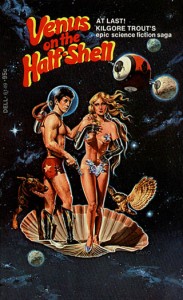Republished by Blog Post Promoter
Category Archives: …and other stuff
miscellaneous postings by Lawrence R. Spencer
REGULAR REALITY
HINDSIGHT
Republished by Blog Post Promoter
How Porn Is Affecting the Libido of the American Male — New York Magazine
Republished by Blog Post Promoter
CLICK THE LINK BELOW TO READ THE ARTILCE:
How Porn Is Affecting the Libido of the American Male — New York Magazine.
THE UNIVERSE IS A BIG PLACE, PERHAPS THE BIGGEST
Republished by Blog Post Promoter
“The universe is a big place, perhaps the biggest.” (Philip Jose Farmer), “Venus on the Half Shell“
Venus on the Half-Shell is a science fiction novel by Philip José Farmer, writing pseudonymously as “Kilgore Trout,” a fictional recurring character in many of the novels of Kurt Vonnegut. This book first appeared as a lengthy fictitious “excerpt”—written by Vonnegut, but attributed to Trout—in Vonnegut’s God Bless You, Mr. Rosewater (1965). With Vonnegut’s permission, Farmer expanded the fragment into an entire standalone novel (including, as an in-joke, a scene that incorporates all of Vonnegut’s original text). Farmer’s story was first published in two parts beginning in the December 1974 issue of The Magazine of Fantasy and Science Fiction. The plot, in which Earth is destroyed by cosmic bureaucrats doing routine maintenance and the sole human survivor goes on a quest to find the “Definitive Answer to the Ultimate Question,” bears some resemblance to the later Hitchhiker’s Guide to the Galaxy series, first launched as a radio serial in 1979.
According to Farmer’s introduction in Venus on the Half-Shell and Others, Vonnegut was initially reluctant to allow the project, but finally relented. After publication, a poorly-worded magazine article gave Vonnegut the impression that Farmer had planned to write the story regardless of his permission, which angered Vonnegut. Also, it was popularly assumed that Vonnegut wrote the book. This problem was solved by the book being reprinted under Farmer’s by-line.
A common element to this novel is the origin of many of the characters’ and locations’ names. Farmer “put in a lot of references to literature and fictional authors… Most of the alien names in Venus were formed by transposing the letters of English or non-English words.”[1]
The title and paperback cover art are a reference to an Italian Renaissance tempera painting by Sandro Botticelli, The Birth of Venus, which depicts the birth of the goddess Venus as her rising from the sea on a scallop shell.






